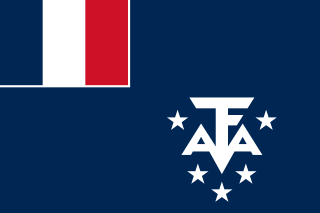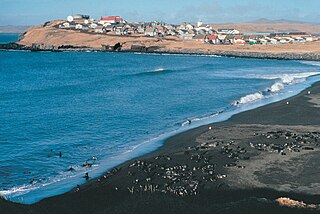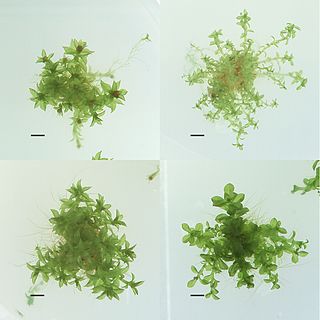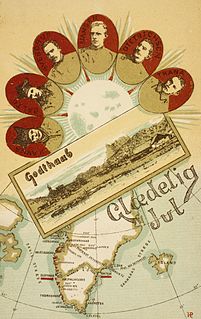
The Kerguelen Islands, also known as the Desolation Islands, are a group of islands in the Antarctic constituting one of the two exposed parts of the Kerguelen Plateau, a large igneous province mostly submerged by the southern Indian Ocean. They are among the most isolated places on Earth, located 450 km (280 mi) northwest of the uninhabited Heard Island and McDonald Islands and more than 3,300 km (2,100 mi) from Madagascar, the nearest populated location. The islands, along with Adélie Land, the Crozet Islands, Amsterdam and Saint Paul Islands, and France's Scattered Islands in the Indian Ocean, are part of the French Southern and Antarctic Lands and are administered as a separate district.

St. Paul is a city in the Aleutians West Census Area, Alaska, United States. It is the main settlement of Saint Paul Island in the Pribilofs, a small island group in the Bering Sea. Saint Paul Island is well known as a birdwatching haven. The population was 479 at the 2010 census, down from 532 in 2000.

St. Lawrence Island is located west of mainland Alaska in the Bering Sea, just south of the Bering Strait. The village of Gambell, located on the northwest cape of the island, is 36 miles from the Chukchi Peninsula in the Russian Far East. The island is part of Alaska, but closer to Russia than to the Alaskan mainland. St. Lawrence Island is thought to be one of the last exposed portions of the land bridge that once joined Asia with North America during the Pleistocene period. It is the sixth largest island in the United States and the 113th largest island in the world. It is considered part of the Bering Sea Volcanic Province.

In evolutionary ecology, an ecotype, sometimes called ecospecies, describes a genetically distinct geographic variety, population or race within a species, which is genotypically adapted to specific environmental conditions.

The Seward Peninsula is a large peninsula on the western coast of the U.S. state of Alaska. It projects about 320 kilometers (200 mi) into the Bering Sea between Norton Sound, the Bering Strait, the Chukchi Sea, and Kotzebue Sound, just below the Arctic Circle. The entire peninsula is about 330 kilometers (210 mi) long and 145 km (90 mi)-225 km (140 mi) wide. Like Seward, Alaska, it was named after William H. Seward, the United States Secretary of State who fought for the U.S. purchase of Alaska.

Samuel Johannesen Balto was a Norwegian–Sami explorer and adventurer. Balto skied with Fridtjof Nansen across Greenland in 1888–89.

St. Matthew Island is a remote island in the Bering Sea in Alaska, 295 km (183 mi) west-northwest of Nunivak Island. The island has a land area of 137.857 sq mi (357.05 km2), making it the 43rd largest island in the United States. Its most southerly point is Cape Upright which features cliff faces which exceed 1,000 feet (300 m). Similar heights are found at Glory of Russia Cape on the north, and the highest point, 1,476 feet (450 m) above sea level, lies south from the island center.

Stuart Island is an island on the southeast side of the Norton Sound of Alaska. The island is about 9.3 miles (15.0 km) long and 6.2 miles (10.0 km) wide with a land area of 52.195 square miles (135.18 km2) and had no resident population at the 2000 census. The name "Stuart's Island" was given during the third voyage of James Cook in September 1778.

Arctic Alaska or Far North Alaska is a region of the U.S. state of Alaska generally referring to the northern areas on or close to the Arctic Ocean.
The Overland Relief Expedition, also called the Alaska Relief Expedition or Point Barrow-Overland Relief Expedition, was an expedition in the winter of 1897–1898 by officers of the United States Revenue Cutter Service to save the lives of 265 whalers trapped in the Arctic Ocean by ice around their ships near Point Barrow, Alaska.

Indigenous peoples of the Subarctic are the aboriginal peoples who live in the Subarctic regions of the Americas, Asia and Europe, located south of the true Arctic. This region includes the interior of Alaska, the Western Subarctic or western Canadian Shield and Mackenzie River drainage area, the Eastern Subarctic or Eastern Canadian Shield, Scandinavia, Western Russia and East Asia. Peoples of subarctic Siberia and Greenland are included in the subarctic; however, Greenlandic Inuit are usually classified as Indigenous peoples of the Arctic.
The Sami were first brought to Alaska in order to teach reindeer husbandry to the Inuit. The U.S. government encouraged this immigration beginning in 1894 to 1898, so that Alaska Natives would rely on reindeer rather than seal, walrus, and whale hunting.

Changunak Antisarlook Andrewuk was a Russian and Inupiat businesswoman who became one of the richest women in Alaska due to her work in the reindeer industry.
Reindeer Lake may refer to:

Yup'ik cuisine refers to the Eskimo style traditional subsistence food and cuisine of the Yup'ik people from the western and southwestern Alaska. Also known as Cup'ik cuisine for the Chevak Cup'ik dialect speaking Eskimos of Chevak and Cup'ig cuisine for the Nunivak Cup'ig dialect speaking Eskimos of Nunivak Island. This cuisine is traditionally based on meat from fish, birds, sea and land mammals, and normally contains high levels of protein. Subsistence foods are generally considered by many to be nutritionally superior superfoods. Yup’ik diet is different from Alaskan Inupiat, Canadian Inuit, and Greenlandic diets. Fish as food are primary food for Yup'ik Eskimos. Both food and fish called neqa in Yup'ik. Food preparation techniques are fermentation and cooking, also uncooked raw. Cooking methods are baking, roasting, barbecuing, frying, smoking, boiling, and steaming. Food preservation methods are mostly drying and less often frozen. Dried fish is usually eaten with seal oil. The ulu or fan-shaped knife used for cutting up fish, meat, food, and such.

The St. Lawrence Island famine killed around 1000 people on St. Lawrence Island in the Bering Sea off the Alaskan mainland during the years 1878–1880. Possible causes may have been overfishing, disease, or negative aspects of settler contact.













